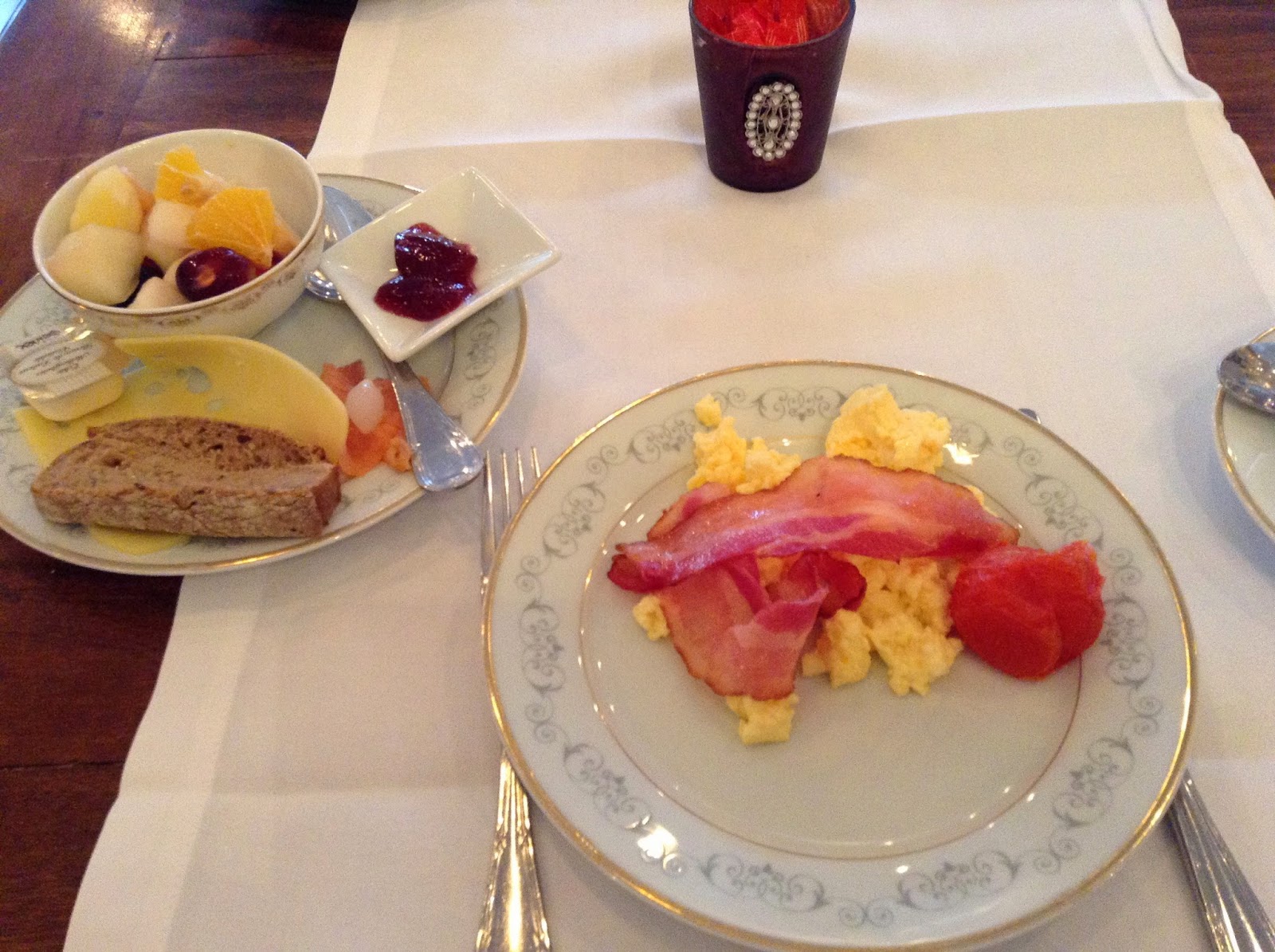Times pass quickly and I just realise that I have been living in Brussels for 17 years, and I can't boost that I know a lot about the city of Brussels. Being residents in a suburb to Brussels, we hardly venture into the city, except for working, and luckily for me, not anymore! I have therefore decided to take a day every week, or every other week, depending on my schedule, to go down-town and look into the history, discover the nice, old, small streets, cafés, restaurants, bars and all the other things I have missed during the years.
I need help of course. It comes in the form of a book called "Brussels for Pleasure, Thirteen walks through the historic city" by Derek Blyth. Derek is a former journalist and has spent many years in the Netherlands and Belgium, and written several books on the art, architecture and history of these places. He has a web-site, My Secret Brussels, where you can read more interesting things about the city, and also join one of his guided tours.
I started with walk No. 2 which covers the Lower Town area. Derek suggests to start with breakfast in the old and very elegant Metropole hotel (I always think it looks like something from an Agatha Christie novel!). So I did! Quite a breakfast with scrambled eggs and bacon, fruit sallad, bread and cheese, salmon, croissant and pain de chocolate (they were small...!)
After this treat I was ready to start the tour!
This tour covers the old Flemish quarters of the city. W.H. Auden who were staying Brussels in 1938 described it as "tangled like old string". This area is outside the 'beaten track' for the general tourist, but for those of you who venture inside will enjoy great architecture, picturesque small streets and history.
 |
The hotel Metropole today. Difficult to get a good photo,
unless you want to risk your life standing in the street! |
The Metropole hotel, part of Historic Hotels Worldwide, started as Café Metropole in 1890. It was was open in the city by the Wielemans brothers to sell their beer. The café was such a success that the family purchased the building next-door, then a bank, which was turned into a hotel, inaugurated in 1895. The reception desk is even today recognisable as the desk of the former bank. It is the only existing 19th century hotell in Brussels today. The
guest list includes many famous people.
Coming out of the hotel I turned right to enjoy two beautiful buildings. One Flemish renaissance building. The building has a curious name; Hier is 't In Den Kater, en de Kat (This is the house of the tomcat and the cat). Henri Beyaert who designed the house in 1874, added tow cats on the roof to illustrate the house name. I am not able to see the cats on the roof, but if they say they are there, they should be. The road outside is today a busy road, and it is almost impossible to get a nice photo of the building without a car in it.
Next to it is the Passage du Nord, designed in 1882 by H. Rieck and opened in 1885. It is a glass roofed gallery with little shops on either side. Must have been a livid place, once upon a time. On a Thursday morning it was rather quiet.
Coming out the other side we reach Rue Neuve. It means 'The New Street' and it was indeed new in the 17th century. Then it was lined with beautiful mansions of which you don't see anything today. Already in 1845 when Karl Marx stayed in the Hotel de Saxe after being expelled from France, the street was more commercialised. Today it is a pedestrian shopping street, and one of the busiest shopping streets in Brussels. No need to say, it is not so beautiful anymore.
Next spot is the Place des Martyrs. The square was created in 1775, by Claude Fisco, in white neoclassical style, giving it a melancholy feel. The mausoleum is commemorating the four hundred and forty five men who died in the Belgian Revolution of 1830. There are also some sculptures of famous Belgians. The surrounding houses have now been more or less renovated, so I think the square looks rather nice, with its cobbled stones, benches to sit on to rest your tired legs and a quiet atmosphere.
Continuing up Rue des Sables, we find a rather dilapidated street, but is has one of the most remarkable museums in Brussels. The building at No. 20 was originally a departement store, which you can imagine when you see it (top left photo). It is a beautiful Art Nouveau building designed by Victor Horta in 1903. Like so many buildings in Brussels it was threatened with demolition. It was, luckily, saved in the end by a group of cartoon fans who suggested that it should be made into a Centre for Comic Books. A suggestion too attractive to the Belgians who are great fans of comic books, having had a lot of famous authors of such and famous characters (Tin Tin and Lucky Luke for example). One has to be thankful for this interest since it saved the building. I have not visited the exhibitions yet, but been to the lovely restaurant on the ground floor. The entrance and the ground floor itself gives you a wonderful sight of the Art Nouveau of Horta. Bottom left if the museum shop!
 Turns out to be a rather long post, so I will divide it into two. I will end with one of the oldest buildings still visible in Brussels, and then only at a few spots. It is the old city wall. The first wall of Brussels was begun in the beginning of the 13th century. The walls were 4 km (2.5 mi) long. The city quickly outgrew the walls, as can be imagined, being an industrious city at the time. A second and larger wall was built in 1356. The walls were being dismantled in the 16th and 18th centuries, but there are some places where you can still see part of it. The first place I visited is the SAS Radisson hotel where part of the old city wall is enclosed in the Atrium. It has been wonderfully incorporated in the restaurant.
Turns out to be a rather long post, so I will divide it into two. I will end with one of the oldest buildings still visible in Brussels, and then only at a few spots. It is the old city wall. The first wall of Brussels was begun in the beginning of the 13th century. The walls were 4 km (2.5 mi) long. The city quickly outgrew the walls, as can be imagined, being an industrious city at the time. A second and larger wall was built in 1356. The walls were being dismantled in the 16th and 18th centuries, but there are some places where you can still see part of it. The first place I visited is the SAS Radisson hotel where part of the old city wall is enclosed in the Atrium. It has been wonderfully incorporated in the restaurant.
Here is another piece of the wall. It was saved by mayor Charles Buls, in the end of the 19th century. He was a patron of the arts and has also saved other buildings in the city. Especially if you have a good guide book. Thank you Derek!
With this beautiful part of the old city wall, I finish part one of the tour. Brussels do give up her secrets when you leave the big roads and venture into the small streets.
















Comments
Post a Comment